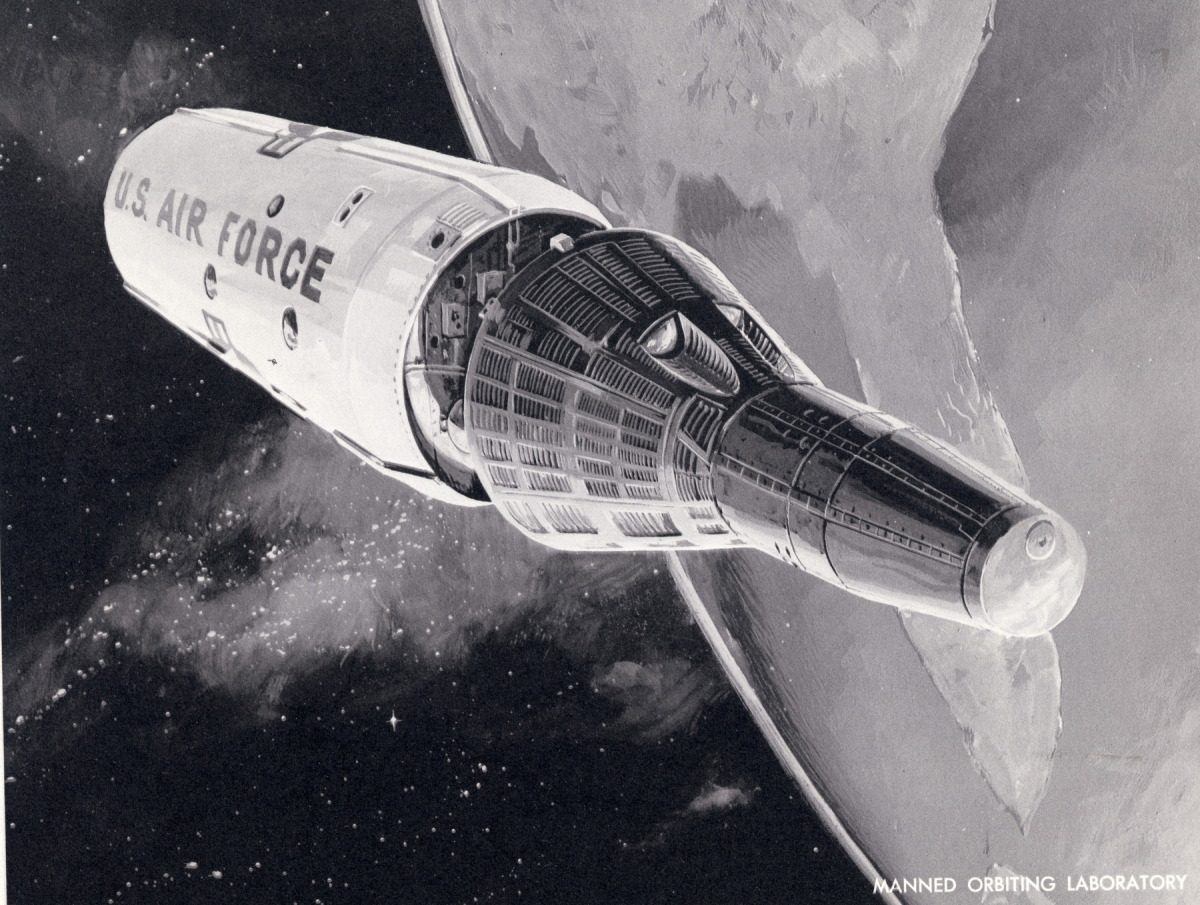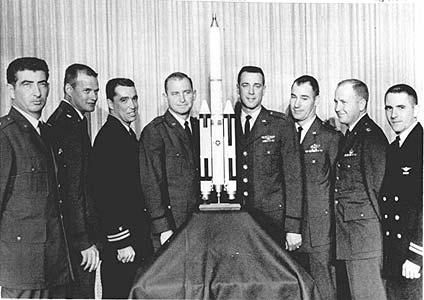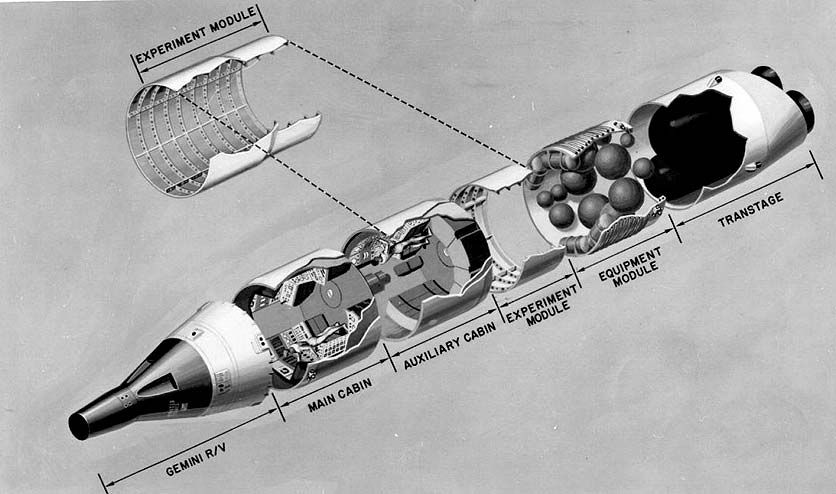
Space History Retrofire: US Air Force Manned Orbiting Lab Astronauts Speak Out

Several space pioneers shared their experiences this month regarding the Cold War Air Force program: The Manned Orbiting Laboratory.
In the 1960s, the U.S. Air Force initiated a human spaceflight program to carry out experiments in space in a laboratory orbiting the Earth for an extended period of time. The Manned Orbiting Laboratory, or MOL, was to use USAF-modified NASA Gemini spacecraft to put two crewmen in a space station.
MOL provided a platform for a highly secret program to gain Cold War intelligence on the Soviet Union and other adversaries.
Four former MOL crew members — 17 astronauts were chosen for the program — were scheduled to take part in a presentation "The Dorian Files Revealed: The Manned Orbiting Laboratory Crew Members' Secret Mission in Space." A National Reconnaissance Office (NRO) Keyhole -10 camera was codenamed "Dorian."
The free event occurred on Thursday (Oct. 22) at the National Museum of the U.S. Air Force located at Wright-Patterson Air Force Base near Dayton, Ohio.

MOL men
The MOL astronauts set to share their insights are:
- Karol Bobko – Following the MOL program, Bobko went to NASA where he served as a pilot on one space shuttle mission and as a commander on two others. He retired from the Air Force as a colonel and then continued his career in the private sector.
- Albert Crews – He was selected as an astronaut in the first group for the MOL program. He transferred to NASA Flight Crew Directorate at the Johnson Space Center in June 1969 when the MOL program was cancelled. He remained a pilot for NASA until his retirement, flying such aircraft as the Super Guppy outsize cargo transport, the WB-57F atmospheric research aircraft and the OV-095 SAIL space shuttle simulator.
- Bob Crippen – He too was assigned to NASA after the MOL cancellation, and he played several critical roles in NASA's manned space program, including serving as the pilot of the first space shuttle mission and the commander of three other missions. He eventually rose to oversee the shuttle program. After retirement as a captain in the U.S. Navy, Crippen continued working in space programs with Lockheed.
- Richard Truly – He was assigned to NASA after the cancellation of the MOL program. There he played critical roles in several manned space programs, including serving as a space shuttle commander. Truly was tapped to lead the return to space after the Challenger explosion. He went on to lead NASA as its administrator from 1989-1992. After retiring from government service, he has continued to have an active career in space programs and other endeavors. He retired as a Navy vice admiral.

Declassified elements of MOL
According to a museum press statement, during the presentation, the National Reconnaissance Office will also reveal information about recently declassified elements of the MOL program.
Get the Space.com Newsletter
Breaking space news, the latest updates on rocket launches, skywatching events and more!
In an update to the program, it has been announced that two former MOL astronauts — James Abrahamson and Lachlan MacLeay — are unable to participate in the event.
Following the cancellation of the MOL program in 1969, Abrahamson continued his U.S. Air Force service. He was eventually assigned to NASA where he oversaw shuttle operations and was selected as the first director of the Strategic Defense Initiative missile defense program in President Reagan's administration. He retired from the USAF as a lieutenant general and continued his career in the private sector.
After MOL, MacLeay returned to the USAF as a pilot, including a stint as a combat commander during the Vietnam War era. He retired as a colonel and went on to work for Hughes on missile systems.
Resources
Special thanks to Marcia Smith's SpacePolicyOnline News for flagging this important space history event. Her website notes the museum has indicated the event will not be available via webcast. However, audio will be posted on its website a week or two later and DVDs will eventually be available for loan.
For more information regarding this October 22 event, go to:
Also, go to this informative NOVA documentary website, "Astrospies" that aired via PBS in 2008 at:
http://www.pbs.org/wgbh/nova/astrospies/profiles.html
As well as:
http://www.pbs.org/wgbh/nova/military/astrospies.html
Leonard David has been reporting on the space industry for more than five decades. He is former director of research for the National Commission on Space and is co-author of Buzz Aldrin's 2013 book "Mission to Mars – My Vision for Space Exploration" published by National Geographic with a new updated paperback version released in May 2015. Follow us @Spacedotcom, Facebook or Google+. Originally published on Space.com.
Join our Space Forums to keep talking space on the latest missions, night sky and more! And if you have a news tip, correction or comment, let us know at: community@space.com.

Leonard David is an award-winning space journalist who has been reporting on space activities for more than 50 years. Currently writing as Space.com's Space Insider Columnist among his other projects, Leonard has authored numerous books on space exploration, Mars missions and more, with his latest being "Moon Rush: The New Space Race" published in 2019 by National Geographic. He also wrote "Mars: Our Future on the Red Planet" released in 2016 by National Geographic. Leonard has served as a correspondent for SpaceNews, Scientific American and Aerospace America for the AIAA. He has received many awards, including the first Ordway Award for Sustained Excellence in Spaceflight History in 2015 at the AAS Wernher von Braun Memorial Symposium. You can find out Leonard's latest project at his website and on Twitter.









